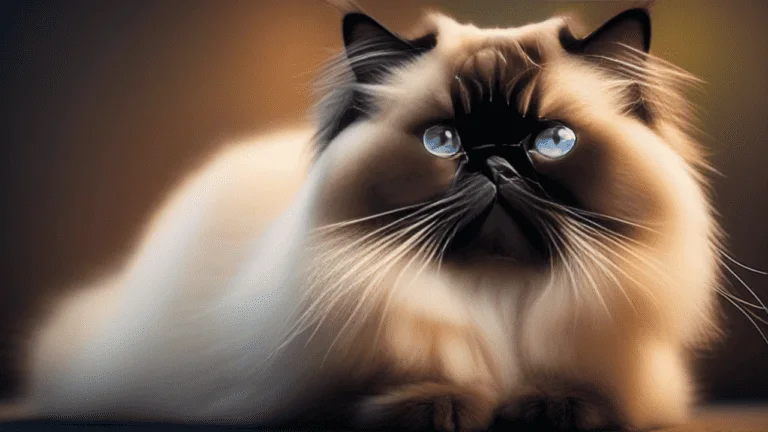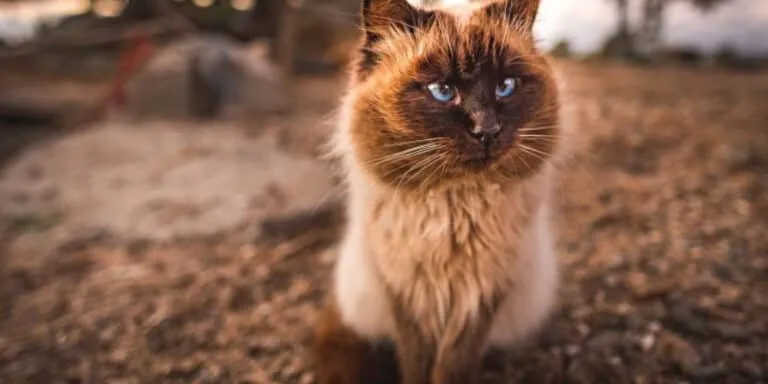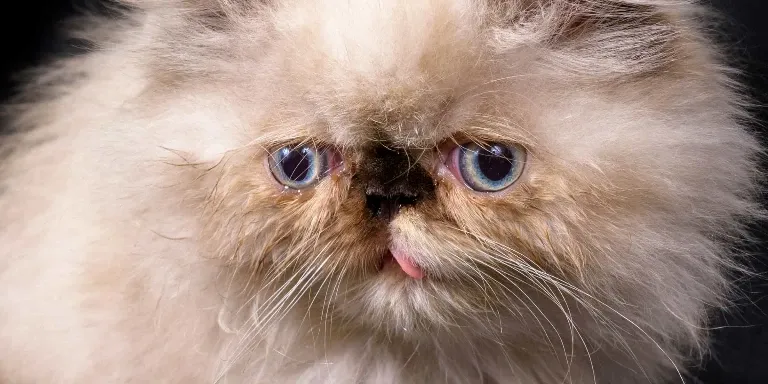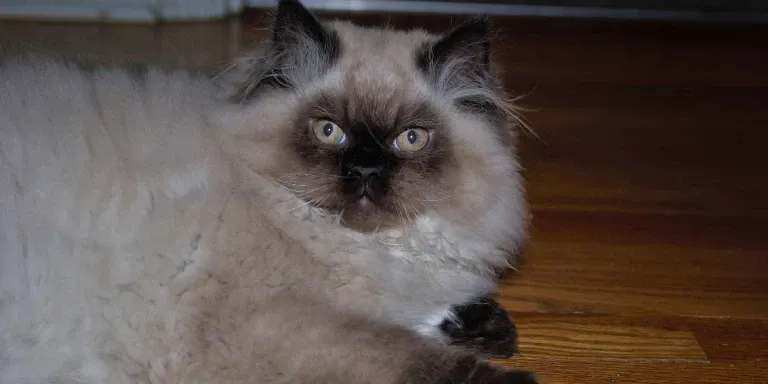The Best Fluffy Pancakes recipe you will fall in love with. Full of tips and tricks to help you make the best pancakes.
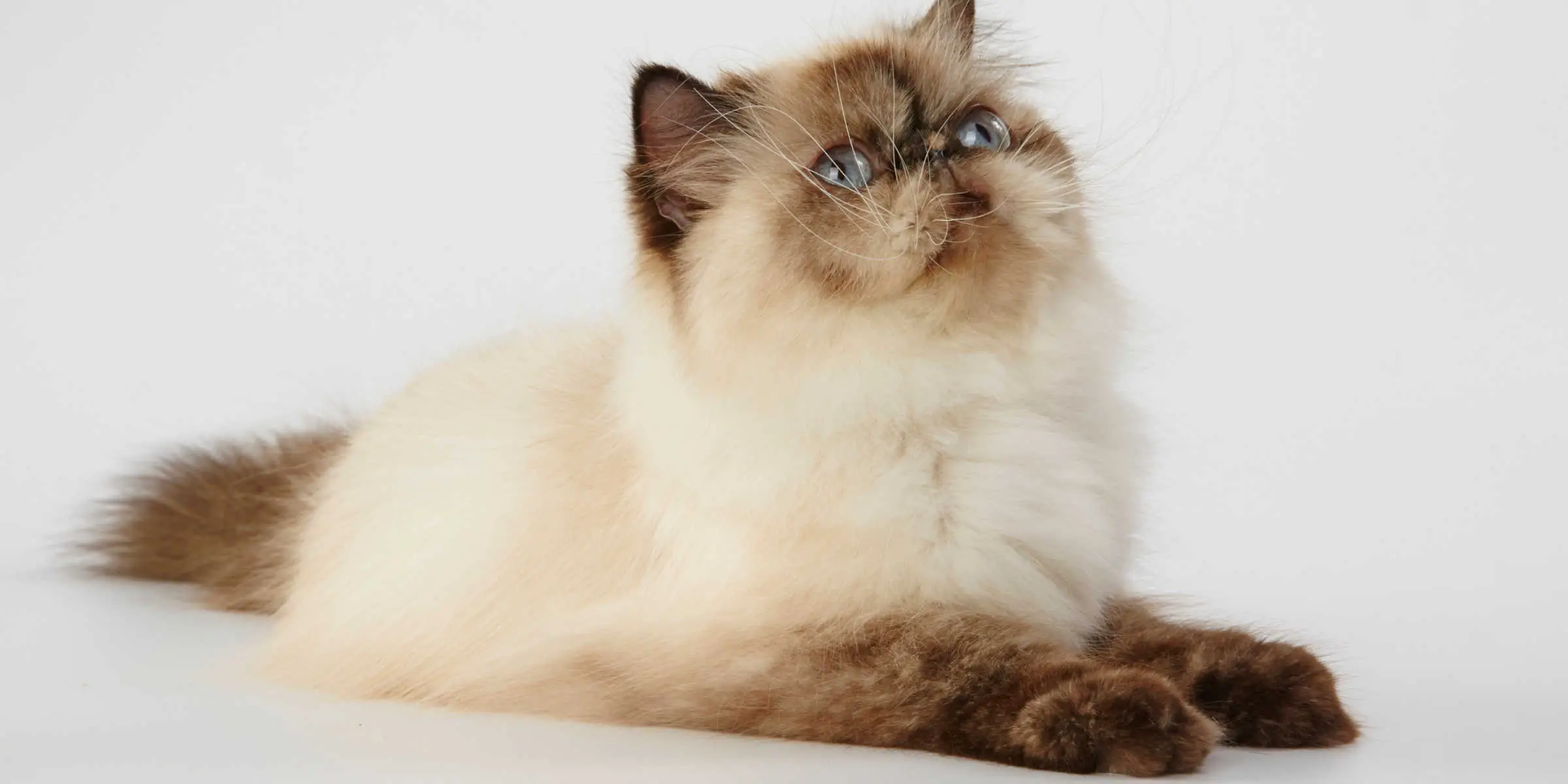
As a cat owner, you may have heard of the adage, ‘Dogs have owners, cats have staff.’But for those who have been fortunate enough to share their homes with a Himalayan cat, they know that these creatures are much more than just demanding felines. They are like a warm ray of sunshine on a cold day, a comforting presence that can make you forget all your worries.
So, do Himalayan cats like to cuddle?
Himalayan cats are known to be affectionate and enjoy cuddling with their owners. They are social cats and often seek out attention and affection from their humans. However, every cat has its own personality, and some Himalayan cats may be more independent than others.
The answer is not a simple yes or no. Like any other animal, each Himalayan cat has its own unique personality and preferences. However, in general, Himalayan cats are known to be affectionate and enjoy human company. They love to curl up next to their owners on the couch or bed, purring contentedly while being stroked.
In this article, we’ll explore the reasons behind this behavior, how to bond with your Himalayan cat, and other ways to show your furry friend how much you care.
Overview of Himalayan Cats
If you’re curious about Himalayan cats, you’ll be happy to know they’re a breed known for their beautiful long hair and affectionate personalities. They’re a cross between Siamese and Persian cats, and they have the best of both breeds.
Himalayan cats are known for their calm and gentle nature, making them great pets for families with children or other animals.
One of the most important aspects of owning a Himalayan cat is their grooming habits. Their long hair requires daily brushing to prevent mats and tangles. They also tend to shed quite a bit, so it’s important to keep up with their grooming routine. However, grooming can also be a bonding experience between you and your cat.
Himalayan cats enjoy being pampered and will often purr during grooming sessions. Overall, their grooming habits only add to their charm and lovable personality traits.
Understanding Cat Behavior
When it comes to understanding your cat’s behavior, paying attention to their body language is key. Cats communicate through a variety of physical cues, from the position of their ears to the movement of their tail. By learning to recognize these signals, you can better understand what your cat is feeling and how to respond appropriately.
Common cat behaviors, such as scratching, grooming, and meowing, can also provide insight into your cat’s needs and emotions.
The Importance of Body Language
As a Himalayan cat owner, it’s important to understand the importance of body language when cuddling with your furry friend. Himalayan cats, like many other breeds, communicate through their body language and it’s crucial to pay attention to their cues.
This will not only help you build a deeper bond with your pet, but also prevent any potential discomfort or aggression during cuddle time. The importance of tone and deciphering signals cannot be overlooked when it comes to body language in different cat breeds.
For instance, while some cats may enjoy being held and cuddled tightly, others may prefer a more gentle approach. Knowing your cat’s body language and recognizing what they’re trying to communicate can go a long way in ensuring a positive cuddling experience for both you and your Himalayan cat.
Remember to always respect your cat’s boundaries and let them dictate the terms of cuddling.
Common Cat Behaviors
You simply can’t ignore the hilarious and strange behaviors that your feline friend exhibits on a daily basis. From chasing their own tail to knocking things off of shelves, cats are known for their quirky antics. These behaviors are not just random, but are actually instinctive and serve a purpose in their survival.
One common behavior that cats exhibit is interactive play. Cats have a natural instinct to hunt and play, and interactive play provides them with the mental and physical stimulation they need. This can include playing with toys, chasing strings, or even pouncing on their owners’ feet. It’s important to engage in interactive play with your cat to keep them active and healthy.
Another behavior that cats exhibit is scratching. Cats have a natural need to scratch in order to sharpen their claws and mark their territory. Providing your cat with a scratching post or pad can help redirect this behavior and prevent damage to furniture or other items in your home.
Understanding and accommodating your cat’s behaviors can help strengthen your bond and ensure a happy and healthy relationship.
Cuddling and Affection
If you’re wondering whether your cat enjoys cuddling or not, there are various factors that can affect their affection. Understanding these factors can help you determine how to best show your cat affection and ensure that they’re comfortable and happy.
Additionally, there are certain signs that indicate whether a cat enjoys cuddling, such as purring, kneading, and nuzzling. By paying attention to these signs, you can strengthen your bond with your furry friend and provide them with the affection they crave.
Factors that Affect a Cat’s Affection
One factor that affects a cat’s affection is its breed, with some breeds, such as the Himalayan cat, known to be more cuddly than others.
Feline personality can also play a role in how affectionate a cat is. While some cats may enjoy cuddling, others may prefer to keep their distance and show affection in different ways, such as through play or grooming.
Human-cat interaction can also impact a cat’s level of affection. Cats that have positive experiences with humans, such as receiving attention and treats, may be more likely to seek out affection and cuddling. On the other hand, cats that have had negative experiences, such as being handled too roughly or not receiving enough attention, may be more wary of human interaction and less likely to cuddle.
Understanding these factors can help cat owners better understand their pet’s needs and preferences, and create a more positive and loving relationship with their feline companion.
Signs that a Cat Enjoys Cuddling
When a cat is in the mood for cuddling, it may display physical cues such as purring loudly and kneading with its paws. These behaviors show the cat’s contentment and affection towards you.
Other signs that a cat enjoys cuddling include rubbing against you and nuzzling your face or neck.
Understanding cat cuddling behavior is crucial to building a strong bond with your feline friend. Pay attention to your cat’s body language and emotional responses when initiating cuddling.
Some cats may be shy and require a gentle approach, while others may be more outgoing and affectionate. To initiate cuddling with a shy cat, start by offering your hand for them to sniff and rub against. Once they feel comfortable, slowly and gently pet them until they start to purr and relax.
Remember, building trust and a strong bond takes time, patience, and understanding.
Tips for Bonding with Your Himalayan Cat
When it comes to bonding with your Himalayan cat, there are a few key points to keep in mind.
First, it’s important to respect your cat’s boundaries and not force affection upon them if they’re not receptive.
Second, establishing trust is crucial for building a strong bond with your cat.
Finally, using positive reinforcement, such as treats and praise, can help reinforce desired behaviors and strengthen your relationship.
By following these tips, you can create a loving and trusting bond with your Himalayan cat.
Respect Your Cat’s Boundaries
Respecting your cat’s boundaries is key to forming a healthy and happy relationship, so don’t force them to cuddle if they don’t want to.
Himalayan cats are known for being affectionate and loving, but every cat has their own personality and preferences. Some may enjoy cuddling with their owners, while others may not be as keen on physical affection.
Setting boundaries with your cat is important for both their well-being and yours. If your cat is not in the mood for cuddles, respect that and find other ways to bond with them.
You can still spend quality time with your cat by playing with them, grooming them, or simply sitting close by while they relax. By respecting your cat’s preferences, you are showing them that you care about their comfort and happiness, which will ultimately strengthen your bond in the long run.
Establish Trust
To establish trust with your feline friend, it’s important to build a strong foundation of boundaries. This means setting limits and sticking to them consistently, whether it’s with playtime, feeding, or handling.
When your cat knows what to expect from you, they feel more secure and confident in your presence. Building trust also involves respecting your cat’s individual personality and preferences.
Some cats may feel more comfortable with a hands-off approach, while others may crave physical affection. Pay attention to your cat’s body language and cues, and adjust your interactions accordingly.
Over time, your cat will learn that you are a reliable and trustworthy presence in their life, and your bond will grow stronger.
Use Positive Reinforcement
Using positive reinforcement is a great way to strengthen the bond between you and your furry Himalayan cat. Training techniques that involve positive reinforcement techniques focus on rewarding good behavior instead of punishing bad behavior. This not only helps your cat learn faster, but it also helps build trust between you and your pet.
Positive reinforcement techniques involve rewarding your cat with treats, praise, or toys when they display good behavior. This can be anything from using the litter box correctly to cuddling with you. By rewarding your cat for good behavior, you’re teaching them that good things come from being around you. This will make your cat more likely to want to cuddle with you and spend time with you in general.
Using positive reinforcement techniques can also help reduce any fear or anxiety your cat may have, which can make them more comfortable with physical contact and cuddling.
Other Ways to Show Your Cat Affection
One fun way to show your Himalayan cat affection is by playing interactive games like hide-and-seek or chase. Cats love to explore, and playing these games will help satisfy their natural instincts. You can use toys like feathers or laser pointers to entice your cat to play, or hide treats around the house for them to find.
Not only will this increase your bond with your cat, but it’ll also keep them mentally stimulated and physically active. Another way to show your Himalayan cat affection is through grooming techniques. Cats love to be brushed and groomed, and it can be a great way to bond with your pet.
Use a soft-bristled brush to gently groom their fur, paying attention to any knots or tangles. You can also use grooming wipes to clean their face and paws. Not only is this a great way to show your cat affection, but it also helps keep them clean and healthy.
Health and Wellness
To ensure your Himalayan cat stays healthy and happy, it’s important to prioritize their health and wellness. Regular check-ups with a veterinarian can catch any potential health issues early on.
Providing your cat with proper nutrition and exercise can also contribute to their overall health and well-being. Remember to schedule routine visits with your veterinarian, feed them a balanced diet, and encourage physical activity to keep your furry friend in top shape.
Regular Check-ups
Don’t neglect your Himalayan cat’s regular check-ups if you want to ensure that they stay healthy and happy. Regular check-ups are crucial in identifying health issues early on, preventing them from escalating into serious and costly conditions.
During these check-ups, your veterinarian will conduct a physical examination and perform routine tests such as bloodwork, urinalysis, and fecal analysis. Aside from detecting diseases, regular check-ups also provide an opportunity for preventative care, such as vaccinations and parasite control.
Vaccinations are essential in protecting your Himalayan cat from infectious diseases such as feline leukemia, rabies, and distemper. Parasite control, on the other hand, prevents infestations by fleas, ticks, and intestinal worms.
With regular check-ups, you can rest assured that your Himalayan cat is receiving the necessary care to maintain their overall health and well-being.
Proper Nutrition
Ensuring your Himalayan cat receives proper nutrition is essential for their overall health and well-being. So, make sure you choose high-quality cat food specifically formulated for their needs. A balanced diet is important to keep your Himalayan cat healthy and happy.
This breed is prone to obesity, so it’s important to monitor their food intake and provide them with a feeding schedule. Consider incorporating supplements into your cat’s diet, especially if they have specific health concerns. Talk to your veterinarian about which supplements would be best for your Himalayan cat.
When choosing food for your cat, make sure to read the labels carefully. Look for high-quality protein sources and avoid foods that contain fillers or artificial preservatives. With proper nutrition, you can ensure that your Himalayan cat will live a long and healthy life.
Exercise
You should incorporate exercise into your Himalayan cat’s daily routine to maintain their health and prevent obesity. While they may appear to be lazy creatures, regular physical activity is essential for their wellbeing.
Indoor exercise is a safer option compared to outdoor activities, as it eliminates the risks of accidents and exposure to diseases. To keep your Himalayan cat active, you can incorporate playtime into their daily routine. Here are some ideas to get you started:
- Provide them with toys that encourage physical activity, such as feather wands and interactive puzzles.
- Create a designated play area in your home where they can run, climb, and jump.
- Encourage them to play with other pets or family members to promote socialization and physical activity.
By incorporating exercise and playtime into your Himalayan cat’s daily routine, you can ensure they remain healthy and happy. Remember to always supervise them during playtime and consult with your veterinarian if you have any concerns about their physical activity.
Common Health Issues for Himalayan Cats
If you own a Himalayan cat, it’s important to be aware of common health issues that may arise. Breathing problems are a potential concern, as their flat faces can make it difficult for them to breathe properly.
Additionally, Himalayan cats are prone to eye conditions such as cherry eye and entropion, which can cause discomfort and even require surgery.
Lastly, dental issues such as periodontal disease and tooth decay can also be problematic for this breed, so it’s important to maintain good oral hygiene practices.
Breathing Problems
When living with a Himalayan cat, it’s important to monitor their breathing as they may be prone to respiratory issues. Breathing problems in Himalayan cats are often caused by their flat faces, which can lead to narrowing of the airways and difficulty breathing.
Here are some treatment options and things to look out for:
- Keep your Himalayan cat at a healthy weight to reduce the strain on their respiratory system.
- Make sure they have access to fresh air and avoid smoking around them.
- Use a humidifier to keep the air moist and reduce irritation in their airways.
If your cat is experiencing severe breathing problems, consult with a veterinarian for medication or surgery options.
Overall, being aware of breathing problems in Himalayan cats and taking preventative measures can help your furry friend live a healthy and happy life. Don’t hesitate to seek professional help if you notice any concerning symptoms.
Eye Conditions
Seeing clearly may be a struggle for your furry companion as Himalayan felines are predisposed to certain eye conditions due to their unique facial structure.
One of the most common eye problems that Himalayan cats may face is cherry eye. This condition occurs when the third eyelid gland in the eye protrudes, causing a red, swollen mass in the corner of the eye. While it isn’t painful, cherry eye can cause irritation and discomfort for your cat. If left untreated, it could lead to more serious issues such as dry eye or corneal ulcers.
Another eye condition that Himalayan cats may experience is cat allergies, which can result in redness, itching, and swelling in the eyes. Treatment options for cat allergies may include antihistamines or immunotherapy, depending on the severity of the condition.
In addition, regular cleaning of your cat’s eyes with a damp cloth can help alleviate any discomfort caused by allergies. If you notice any changes in your Himalayan cat’s eyes, it’s important to consult with your veterinarian for proper diagnosis and treatment.
Dental Issues
Maintaining good oral hygiene is crucial for the overall health and well-being of your Himalayan cat. Without proper dental care, your furry friend can develop a range of dental issues, including tooth decay, gum disease, and bad breath.
It’s important to keep an eye on your cat’s dental health and take the necessary steps to prevent any issues from developing. Here are four things you can do to ensure your Himalayan cat maintains good oral hygiene:
- Brush their teeth regularly: Brush your cat’s teeth at least once a week with a toothbrush and toothpaste specifically designed for cats.
- Provide them with dental treats and toys: Chewing on dental treats and toys can help remove plaque and tartar buildup.
- Schedule regular dental check-ups: Take your cat to the vet for regular dental check-ups to catch any issues early on.
- Monitor their diet: Feed your cat a balanced diet that promotes good dental health and helps prevent tooth decay.
By following these simple steps, you can help ensure your Himalayan cat maintains good oral hygiene and stays healthy and happy.
Do Himalayan Cats Being Good Pets Mean They Like To Cuddle?
Himalayan cats as pets are known for their affectionate nature, often seeking out cuddle time with their owners. These beautiful felines enjoy being close to their human companions and are often happy to snuggle up for some quality bonding time. Their loving nature makes them excellent cuddle companions for those seeking a warm, furry friend.
Conclusion
Congratulations, you’re now a Himalayan cat expert! You’ve learned about the unique features and behaviors of this breed and how to best bond with them through cuddling and other forms of affection. You now know the importance of maintaining your cat’s health and wellness and the common health issues that may arise.
But let’s face it, will your Himalayan cat actually want to cuddle with you? Despite their reputation for being affectionate, the truth is that every cat has their own personality and preferences. So while some Himalayans may love to cuddle for hours on end, others may prefer to keep their distance.
In the end, the key to a happy and healthy relationship with your Himalayan cat is to respect their boundaries and unique personality. Whether they love to cuddle or not, showing them love and affection in their own way will deepen the bond between you and your feline friend.
So go ahead and give your Himalayan cat a little extra love today, and watch as they purr with contentment.

